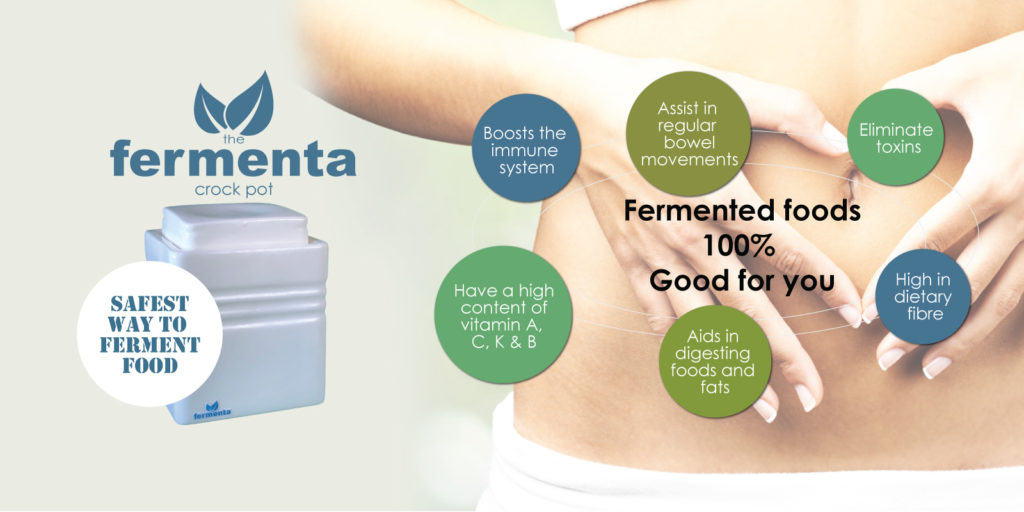No products in the cart.
Fermentation

“A myriad of research has demonstrated how the ideal balance of good and bad bacteria in your gut forms the foundation for physical, mental, and emotional well-being.” – Dr. Joseph Mercola
As far back as Hippocrates who stated, “All disease begins in the gut”, it was recognized how important it is to ensure that the gut is populated with healthy bacteria to enjoy optimum health. Fermented foods provide exactly that in the form of multitudes of probiotics.
What is vegetable fermentation?
It is a natural preservation method that takes place in an anaerobic(oxygen-free) environment through lactic-acid fermentation. No vinegar or heat is used, only vegetables and a salt brine. The end result is delicious Sauerkraut, Kimchi (a favourite in Korea), and any combination of vegetables, an example of which is the Spanish blend known as Curtido.
Fermentation is one of the oldest known methods of food preservation. There are however some important rules to ensure that the food ferments in a healthy way and does not form mould.
How the Fermenta Crock Pot ensures that the food ferments safely
To safely ferment food you need to maintain an oxygen free environment. The Fermenta crock pot is specially designed with a barrier in the form of a gutter to keep oxygen out and to allow the naturally produced carbon dioxide to escape. After fitting the lid of your Fermenta, you fill the gutter with either water or oil to create the barrier.
More Questions Answered
Fermentation is one of the oldest known methods of food preservation. There are however some important rules to ensure that the food ferments in a healthy way and does not form mould.
• The specially designed lid gutter makes this the safest method of fermentation
• Hygienic glazed ceramic is not porous and cannot absorb liquid
• Convenient size -2 litres
• Enjoya variety of delicious fermented vegetable blends
• Means of improving the gut biome of the entire family protecting and healing so many diseases
- CLEANING VEGETABLES: Rinse off vegetables in a salt solution of 1-2 Tbsp. of salt to a sink or basin
- OIL OR WATER IN THE GUTTER: When water evaporates the oxygen barrier breaks so using oil is a useful alternative
- SALT: Use only non-iodised salt e.g., sea or pink salt
- WATER: Use any water without chlorine. No tap water!
- STORAGE: When the vegetables are fermented to your preferred tanginess, transfer to bottles and refrigerate. Fermented vegetables should store for 6 to 8 months
- AVOID FLOATERS: When fermenting finely cut vegetables use a cabbage leaf to cover the veg to avoid vegetable pieces from floating above the brine
- PACK VEG TIGHTLY: To remove trapped oxygen
- KEEP VEG CRUNCHY: Add a few tannin-containing leaves. Any one of the following leaves: Oak, Grapevine, Green tea, or Seaweed
- HYGIENE: Wash your hands well before touching the vegetables, rinse the crock pot & weights with Hydrogen Peroxide or fill the crock pot with boiling water and a cup of vinegar and allow to soak before using
- BRINE: It is important to select the correct brine. Consult the chart on
- WHERE TO FERMENT: House the Fermenta in the coolest part of the house, especially in the summer

TIP
Ensure that the vegetables are covered with brine and hold them down with the weights provided with your Fermenta crock pot. Your Fermenta will ensure that your food ferments in a perfectly natural lactic acid environment and is safe to eat